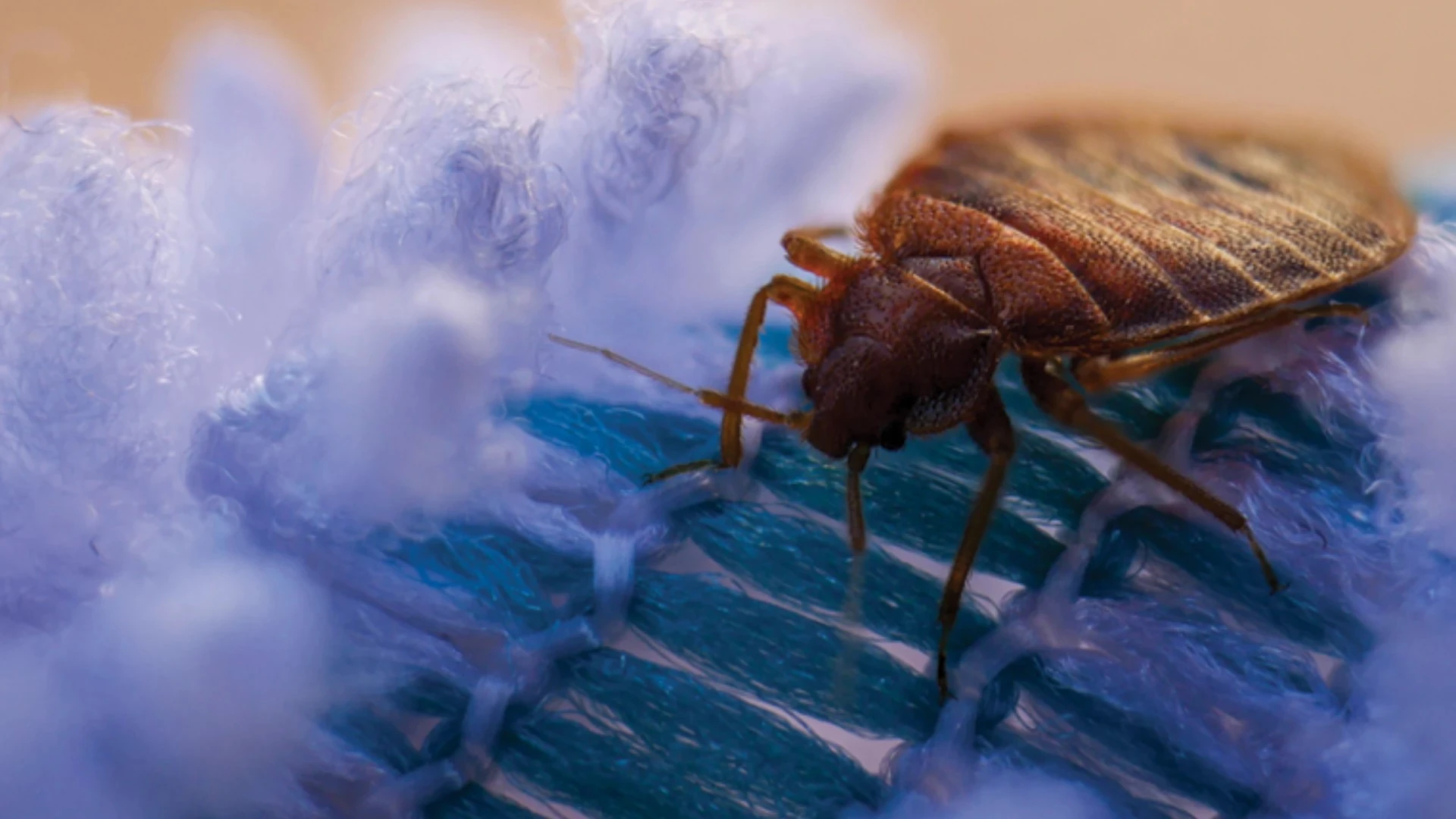Termite inspectors and treaters are truly a unique breed, often spending long hours working in the most unappealing conditions. A great deal of money and potential liability is riding on their inspection findings and how they are reported — making their job one of the most important in your company.
THE INSPECTION PROCESS. There is no substitute for a thorough termite inspection. Ideally, it should begin by interviewing the property owner about previous problems, treatments, repairs and structural alterations. Previous treatment can often be determined by the presence of old drill hole marks in slabs and foundations. In seeking evidence of subterranean termites, all potential termite entry points that are accessible should be thoroughly examined on the building exterior, interior, sub-structural area and, oftentimes, the attic. Techniques for inspecting each of these areas have been provided by various authors, including Moore (1991), Hedges (1992) and Bello (1995). While termites may occur virtually anywhere in a structure, certain areas are especially worth noting.
Building Exterior. The exterior perimeter is where many vulnerable termite entry points such as exterior siding, dirt-filled porches, expansion joints, and cracks and voids in foundations are located. Examine the entire foundation wall closely for evidence of mud shelter tubes. Pay particular attention to earth-to-wood contacts and where wood siding, stucco or veneer extend close to or below grade.
Much like ants, subterranean termites commonly follow cracks, edges and other "guidelines" when they encounter building foundations. Consequently, the tubes may be hidden in cracks, corners and crevices such as at raised porches, inside corners and around chimneys. Also inspect and probe windowsills, entrance and garage doorframes (especially at the base), crawlspace access doors, planter boxes, posts, pillars, landscape timbers and fences adjoining the structure. Note on the inspection report any obstructions such as adjoining decks, dense grass or heavy vegetation, firewood or debris that prevent viewing of the entire foundation. Moisture problems, improper grading, excessive amounts of mulch and other conducive conditions also should be noted on the report.
While inspecting outdoors, termites may be found in mulch, landscaping timbers and other areas of the property but not in the structure. The question often arises whether such findings must be reported, and at what distance from the structure a treatment might be necessary. While there is no industry "regulation" on such occurrences, the National Pest Management Association is of the opinion that termites found in areas outside of the structure should be mentioned in the comment section of the inspection report, but should not be reported as active within or infesting the structure (NPMA 1999). There is no minimum distance from the foundation that if termites were discovered, treatment would be required by industry standards or practices. Nonetheless, inspectors may wish to document their findings in the comments section of their report as a service to the property owner or purchaser, and discuss preventive treatment options against future infestation.
Substructure (Crawlspace & Basement). The crawlspace is one of the most physically demanding areas to inspect, but affords one of the best opportunities to find evidence of termites. Begin by carefully examining the outer and inner frame of the crawlspace access door, a common place to find evidence of termites. The inspector should then systematically crawl around the entire inside perimeter where accessible, and carefully inspect for mud tubes on foundation walls, sills, headers, joists and subflooring. Pay particular attention to the box sill assembly (the area where the sill, header, floor joists and subfloor meet) above the foundation. Oftentimes, this area will be obscured by insulation that may need to be moved aside and inspected as well as conditions permit. Insulation obscuring the inspector’s view should also be noted on the inspection report as an inaccessible area. Inspect closely for mud tubes along the crack between the sill and foundation wall, at junctures between joists, sills, headers and subflooring, and along support beams. Areas of the foundation located behind stoops, planter boxes, patios and earth-filled porches are especially prone to infestation.
While much of the crawlspace inspection effort is near the foundation, one should not neglect areas more toward the center. Support columns or piers, chimney bases, pipes, ductwork, and other vertical connections between the soil and the substructure should also be inspected for mud tunnels, along with the wood directly above. Drop tubes may be seen extending down from joists many feet from foundation walls. Lumber, form boards, stakes, stumps, cardboard and other cellulose debris in the crawl area should be inspected, noted on the report and removed where feasible. Lumber and other susceptible items that the customer does not want moved should be stacked on polyethylene sheeting, preferably above ground level. Any moisture problems or inaccessible areas should be noted on the inspection report.
Basements are generally less strenuous to inspect, but can afford many hidden areas for termites, especially if the walls, floors and ceilings are finished. In unfinished basements, key inspection areas include the base of the foundation wall, the box sill assembly on top of the wall and any cracks in the foundation. If the basement has a suspended ceiling, panels around the perimeter can be carefully lifted to allow inspection of the sill assembly. Wood at the base of stairs, support posts, partitions and doors also should be inspected, as should floor drains and plumbing areas of bathrooms, hot water heaters and washer/dryer areas. Settlement cracks in the floor also should be inspected and noted if not obscured by floor coverings. Inspect window frames and be observant for the presence of dead swarmers or discarded wings in windowsills, spider webs, floor vents or ducts. Opportunities for finding termites will be more limited if the basement is finished, e.g., if there is paneling, drywall, finished ceilings or floor coverings present. In this case, the inspection will be much the same as described below for slab-on-ground construction.
Interior Inspection (Slab-On-Ground). The interior of slab-on-ground construction is the most difficult area to inspect because most of the termite entry points are hidden behind finished walls, floors and ceilings.
One key inspection area is along baseboards of all perimeter walls. The inspector should look closely for mud in the crack behind or beneath the baseboard, and lightly tap or probe suspected areas. Oftentimes, termites will hollow out the wood trim, leaving the thin painted surface intact. Besides the perimeter expansion joint where the slab and foundation meet, inspectors also should be mindful of other possible expansion joints, such as occur when a room addition is added onto an outside wall. Oftentimes the only way of discovering these potential entry points is to interview the property owner. Inside expansion joints also will occur wherever there is a step-up or step-down separation in floor level.
Inspectors should watch for mud tubes higher on the wall surface as well, especially around windows and doorways, walls that contain plumbing and at the ceiling line. Shining a flashlight at an angle across painted, papered or paneled wall coverings will help reveal rippled or sunken areas where termites have tunneled underneath. Examine all cracks around window and doorframes, built-in bookcases, fireplaces and plumbing areas associated with bathrooms (including bath traps), kitchens, air conditioners and drain lines. Drop tubes hanging from ceilings may also be observed or tiny holes bored by the termites through plaster or drywall, accompanied by bits of soil.
Subterranean termites commonly infest garages, usually around the perimeter expansion joint or where the garage slab and building foundation meet. Inspections in these areas are often impeded by shelving, yard equipment and other items stored against walls. Whenever possible, these items should be moved in order to provide visual access to inspect.
Although attics are less often a problem with subterranean termites, this area may also warrant inspection, particularly if there is damage to the wall below or if a roof leak has occurred. Attic inspections — while often prudent — can also be hazardous, particularly if there is no floor. Consequently, attic inspections are often performed selectively within companies. Other likely areas to find termites in slab construction are around chimneys, plumbing and vent pipes, and directly above filled porches and patios.
INSPECTIONS AND LIABILITY. Termite inspections, especially those involving real estate transactions, are the primary source of litigation in the pest control industry. Much of the problem stems from a lack of understanding as to the limits of the inspection. When householders in Kentucky were asked what the consequences should be for missing termites in a real estate inspection, 87 percent said the firm should provide a free treatment or repair any damage; more than half (52 percent) believed they should do both (Potter and Bessin 2000).
Experience has taught — often the hard way — that failure to find termites during an inspection does not necessarily mean that they are not present in the structure. Termites are cryptic creatures and infestations and points of entry can go undetected for years, hidden behind walls, floor coverings, insulation or other obstructions. Masonry units (e.g., concrete block, brick, stone) containing hidden voids, and siding and stucco near or below ground will further hide evidence of termite infestation. Termite feeding and the resultant damage can also progress undetected in wood that is exposed because the outer surface is usually left intact. Needless to say, even the most experienced termite inspector can overlook an infestation or damage that is hidden.
For a list of references, and an article about what companies can do to lessen their termite liability, visit www.pctonline.com.
The author is a professor and urban extension entomologist at the University of Kentucky. He can be contacted at mpotter@giemedia.com.
REFERENCES
BECKERS, M.C. — 1995. Document everything: words to live by. Quarterly Commentary of the National Purchasing Group for Pest Control Operators, Inc. Orlando, Fla. 8 pp.
BELLO, P.J. — 1995. Leave no stone unturned. Pest Control Technology. 23(2): 30-33, 80.
HEDGES, S. —1992. Termite inspections. Pest Control Technology. 20(2): 30-33.
JOSOF, L. — 1996. Callbacks. Pest Control Technology. 24(2): 36, 38, 40, 45.
MOORE, H.B. — 1991. Termites: their prevention and control. In: An Introduction to Wood Destroying Insects. Pest Control. pp. 34-71.
NPMA — 1999. Termites found adjacent to structures during inspections. NPCA Pest Management Library Update. 6/99.
POTTER, M.F. and R.T. BESSIN — 2000. Termites and public attitudes. Pest Control Technology. 29(2): 39-43, 46, 48, 50, 52, 56.

Explore the February 2011 Issue
Check out more from this issue and find your next story to read.
Latest from Pest Control Technology
- Rentokil Terminix Expanded in Key Markets with 2024 Acquisitions
- In Memoriam: Joe Cavender
- Certus Acquires Green Wave Pest Solutions
- Liphatech Adds Alex Blahnik to Technical Team
- Do the Right Sting: Stinging Insect Identification, Management, and Safety
- VAGA's 8th Annual Veterans Thanksgiving Appreciation Dinner
- Clark's Blair Smith on the Response to Increased Dengue Fever Cases in Southern California
- WSDA, USDA Announce Eradication of Northern Giant Hornet from U.S.





